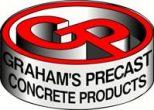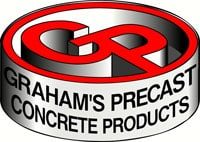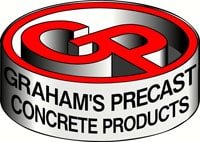When you think of construction, the image of wet cement being poured might come to mind. But there’s a method that’s been gaining traction and that’s the use of precast concrete. In this blog, we’ll talk about what precast concrete is and why it is becoming the go-to choice for many construction projects.
The Basics of Precast Concrete: An Overview
Precast concrete is concrete that is cast in a mould and then cured off-site. This method ensures a consistent and high-quality product that can be transported to various construction sites.
Benefits of Using Precast Concrete Panels
Precast concrete panels are not only durable but also offer flexibility in design. Their uniformity ensures a seamless look, making them a favourite for modern architectural designs.
Why Choose Precast Concrete for Septic Tanks and Reed Beds?
Precast concrete offers an eco-friendly solution for wastewater systems. Its watertight design reduces the likelihood of leaks, ensuring a sustainable and environmentally friendly option for managing waste.
Steps in Manufacturing Concrete Feed and Water Troughs
When it comes to ensuring that livestock have access to clean water, the design and durability of feed and water troughs play an important role. Precast concrete troughs, in particular, offer a robust solution that can withstand the test of time and the elements. But how are these troughs made? Let’s delve into the process behind their creation:
Design
The journey of creating a concrete trough begins with a comprehensive design phase. Here, experts consider various factors like the size of the livestock, the volume of water required and the location’s specific conditions. The design ensures the trough meets the unique requirements of each setting.
Moulding
Once the design is finalised, the next step is moulding. High-quality concrete is poured into specially crafted moulds that shape the trough. This process helps ensure each trough is consistent in size and shape for uniformity and structural integrity.
Curing
After moulding, the concrete undergoes a curing process where it’s allowed to set and harden. This phase is important as it makes sure the concrete achieves its maximum strength, making the trough resistant to wear and tear.
Transportation
The final step involves transporting the fully cured troughs to their intended locations. Given their robust nature, these troughs can be heavy, requiring special equipment for transportation. Once they arrive at their destination, they’re ready to be installed and serve their purpose, providing livestock with a reliable source of water.
Top Uses of Precast Concrete in Civil Construction
Precast concrete has revolutionised the way we approach civil construction. Its adaptability and resilience make it a preferred choice for plenty of applications. From infrastructure projects to agricultural needs, precast concrete’s versatility shines through. Let’s explore some of its primary uses in the realm of civil construction:
Civil Construction Products
From concrete headwalls to pipes, precast concrete is versatile and caters to various civil construction needs. Whether it’s for large-scale projects or smaller ones, precast concrete stands out for its durability and strength.
Concrete Water Troughs
Designed to withstand the unpredictable local weather, these troughs are ideal for livestock, ensuring they have access to clean water regardless of the conditions.
Emerging Trends in Precast Concrete Applications
As the construction industry evolves, so do the methods and materials used. Precast concrete, once seen as just a reliable and durable material, is now at the cutting edge of modern construction trends. Its adaptability and resilience have paved the way for innovative applications in various projects. Let’s explore some of the notable trends shaping the future of precast concrete:
- Sustainability: With a growing emphasis on eco-friendly construction methods, precast concrete is at the forefront due to its sustainable properties.
- Innovation in Design: Modern architectural designs are increasingly incorporating precast concrete for its flexibility and aesthetic appeal.
- Increased Efficiency: With off-site curing, precast concrete reduces construction time, leading to faster project completion.
Challenges in Concrete Production and How Precasting Addresses Them
The production of concrete isn’t without challenges, especially when considering the environmental impact and the need for durable products. Precasting emerges as a solution, addressing these concerns head-on and revolutionising the way we think about concrete production. Let’s explore how:
Addressing Environmental Concerns
Traditional concrete production can have environmental implications. Precasting addresses this by ensuring minimal waste and the efficient use of materials.
Ensuring Durability and Longevity
Precast concrete undergoes rigorous quality checks so the final product is not only durable but also long-lasting, even in the harshest of conditions.
Elevate Your Construction with Precast Concrete
If you’re looking to elevate your construction game, consider the advantages of choosing products from Graham’s Precast Concrete Products Pty Ltd. Dive into the world of precast concrete and see the difference it can make for your projects. Reach out to us and let’s build a sustainable future together.






